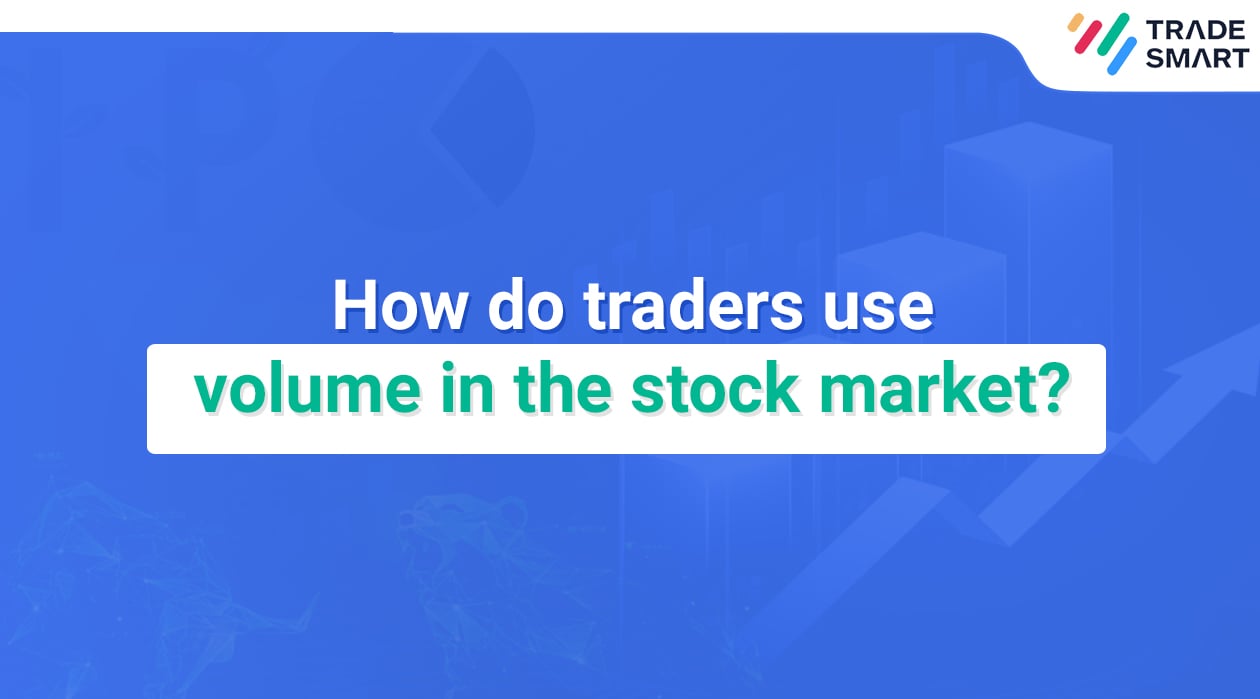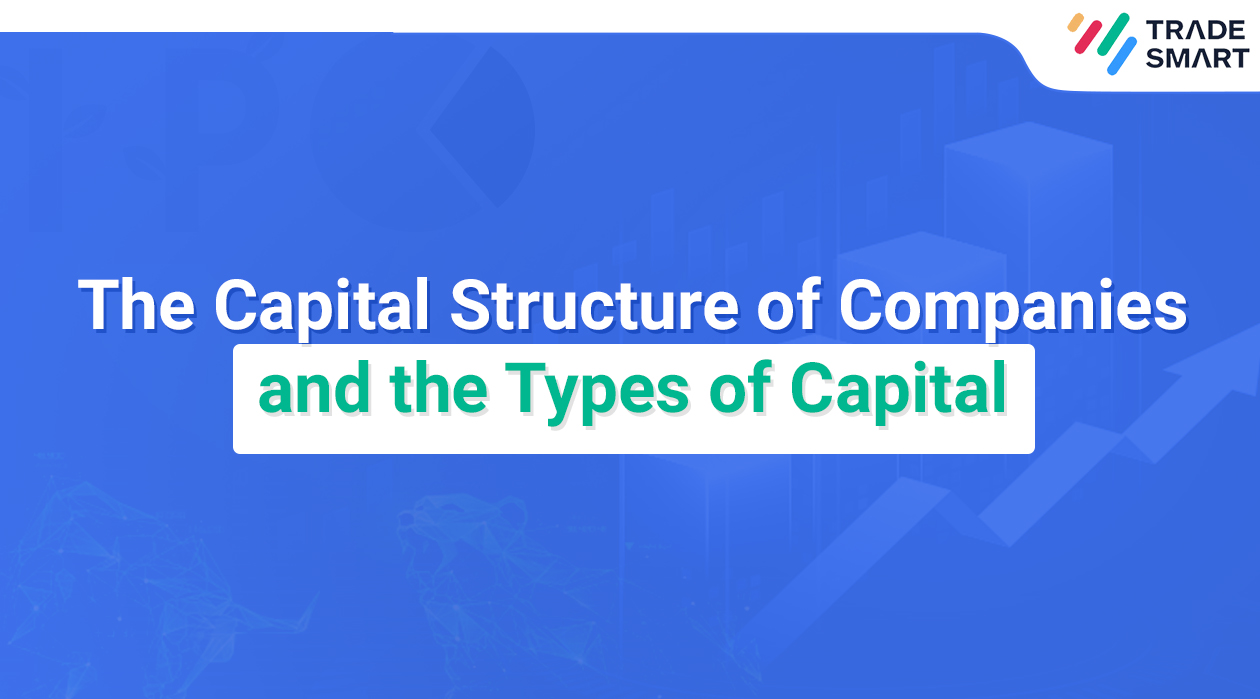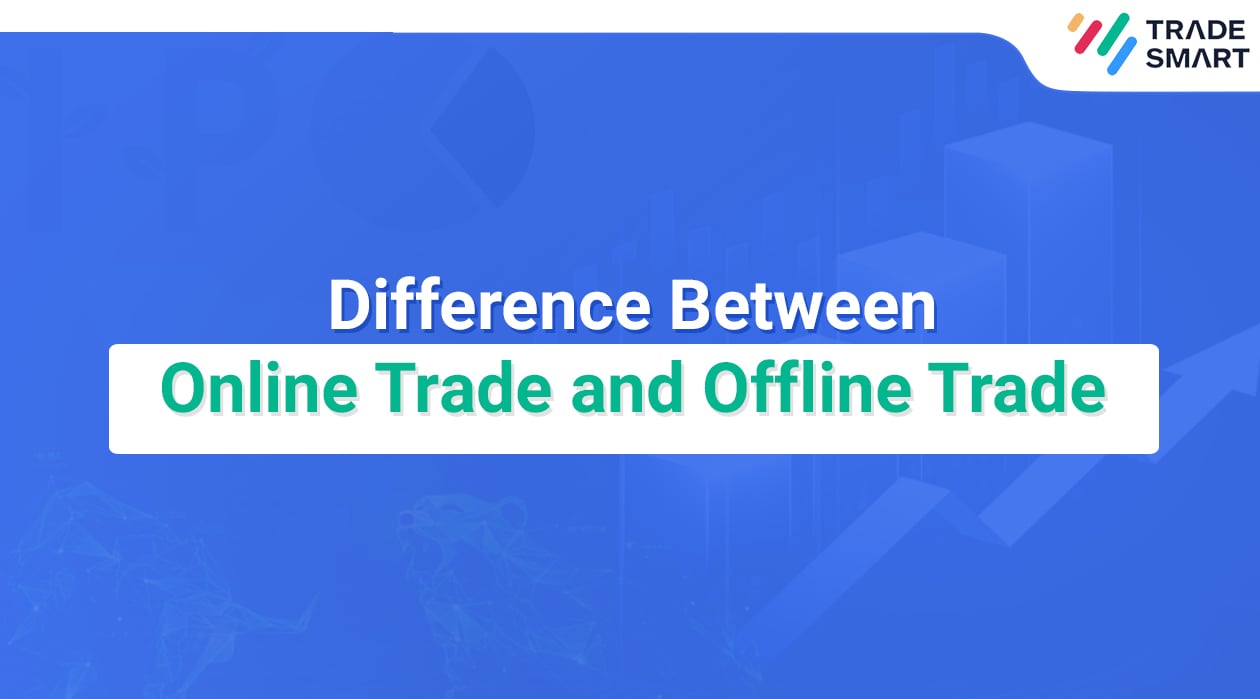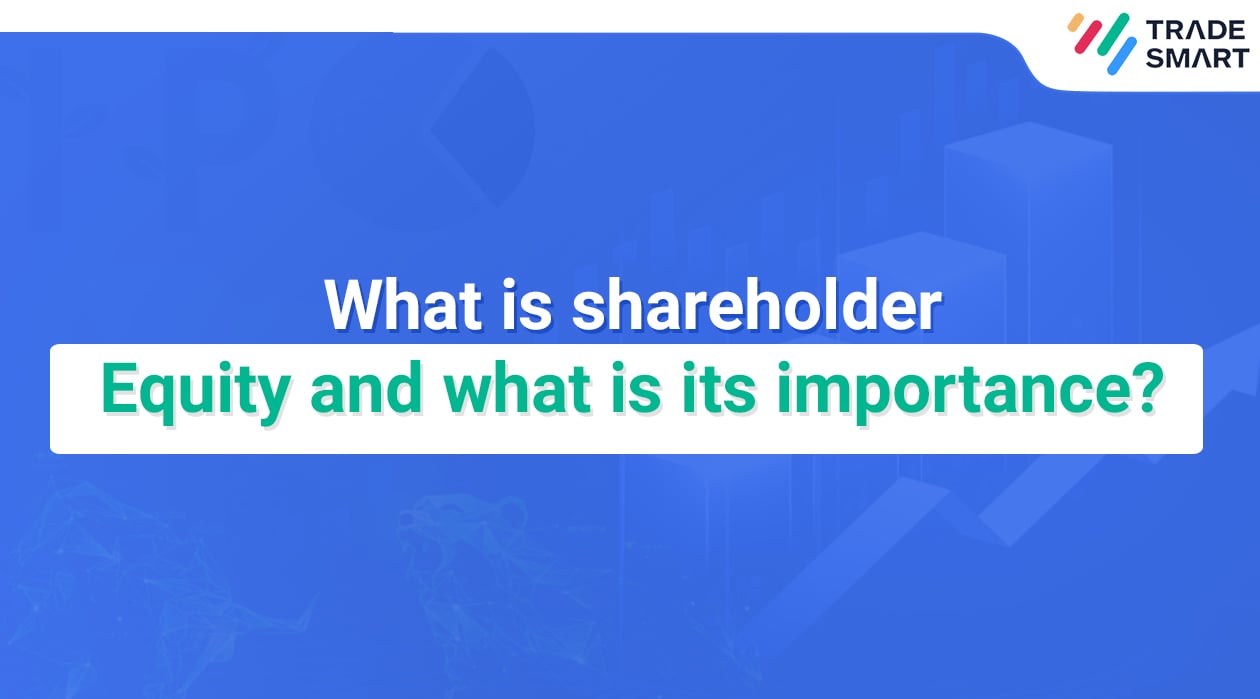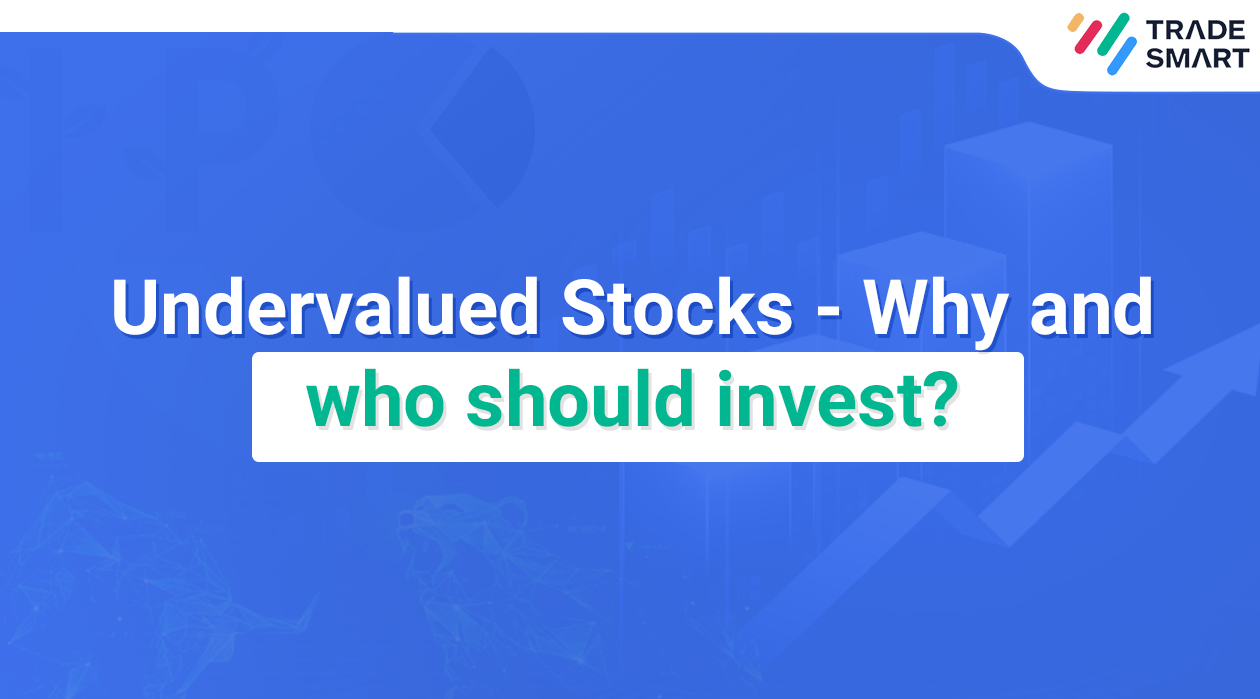Introduction
Trading in the stock market is one of the ways to earn significant quick returns.
Many people think that the stock market is a way to make easy returns, but gaining in the stock market requires knowledge about the stock market and how it works.
Trading volume is one such factor that a trader should know of. A trader can use volume analysis to earn intraday returns out of the stock market.
But, how can Volume in the stock market facilitate trading returns?
Let us understand the meaning of volume in the stock market and how to use the same in making trading decisions.
What is Volume in the stock market?
We can understand volume in a general sense as a total number. In the stock market, the trading volume is the total number of shares traded in the stock market (bought and sold) during the trading period, that is, during a fixed period. The volume shows the measure of turnover of the shares.
Each ticket (each transaction) represents a trade and is calculated depending on the total trade price and counted towards the total trading volume. Although the same shares may be traded back and forth multiple times, the volume is calculated for each such transaction.
So, if 500 ABC shares were bought, sold, repurchased, and resold, resulting in four transactions, then the volume would be registered as 2000 shares, though those 500 shares may have been played multiple times.
Therefore, volume is the total number of active shares. It can be a purchase order or a sales order. High volume indicates that the stocks are actively traded. Similarly, low volume indicates that the stock is not actively traded.
Trading volume can be measured for any type of financial instrument which is traded: stocks, bonds, derivatives (futures and options contracts), and gold.
Stock markets publish trading volumes on the stock market for each trading session. Volumes are reported for each stock and the total volume of stocks traded during the session in the exchange.
Volumes can also be reported in indices. This helps us to know the volume of shares traded in Nifty 50 or Sensex for a particular trading session at any other time.
Where to find trading volume?
All stock markets keep track of the volume of stocks. Stock market volume information is therefore easily accessible. One can look at trade, news websites, and third-party websites that have stock market information.
Platforms also use candlestick charts to show volume over time. The green bar indicates the purchase volumes, and the red bars indicate the sales volume.
There are also volume charts depending on when someone wants to keep them in mind. There can be hourly, daily, monthly volume charts,100-day, 200-day volume charts, etc.
Generally, the trading volume of a particular stock on the National Stock Exchange (BSE) and the Bombay Stock Exchange (BSE) will vary. This is also one of the reasons why there may be a slight price difference between Sensex and Nifty 50 in the same stock. The stock should be listed on both exchanges for this to happen.
What is stock volume?
The stock volume reflects the action taken in the stock. The volume metrics record each activity, either selling or buying.
If the stock shows more volumes, it means that there is a lot of trading activity happening for the stock. This can be negative or positive. There may be negative news developments that could encourage more sales. The opposite is also true.
Higher volumes indicate the more number of times a stock has changed hands. Volume is calculated as the total number of shares that are actually traded (bought and sold) during a trading day or a specified period of time. It is a measure of total stock turnover. Each ticket represents a trade and counts towards the total trade volume. While the same stock may be traded back and forth multiple times, the volume is counted on each transaction. So if 500 shares of XYZ were bought, then sold, then bought again, and then sold again, resulting in four tickets, then the volume would register as 2,000 shares, even though the same 500 shares may have been in play multiple times.
During one trading session, volumes are usually higher during market opening and closing as intraday traders rush to book and close their day portfolio positions. Trading volume analysis is profitable with short-term intraday traders.
Investors using fundamental analysis can also use trading volume as a tool to analyse any significant changes in the share during a longer period.
How does volume work?
The volume records the number of trades performed over some time. Liquidity in the market can be directly measured using volume. Major stock exchanges report daily volume statistics, both for individual securities and the total amount of trades made in the trading session. The volume also reflects price pressure.
When market activity – that is, volume – is low, investors expect prices that are slow (or declining). When market activity goes up, prices often go the same way. In addition, technical analysts use stock volumes to determine the best trading and entry points.
How to find Volume on a Chart?
The magnitude of the trading prices is clearly shown throughout the trading day, usually below the price chart. Volume is usually displayed as a straight bar representing the total volume for an extended chart.
For example, a 10-minute price chart could show volume bars that show the total trading volume for every 10 minutes. Volume bars are usually green or red. Green indicates the volume of net buying, while red indicates the volume of net selling. Some traders prefer to measure the volume with a moving average of the market to see if the volume is too heavy or thin.
Volume: Why is it important?
There are several ways that trading volume can help evaluate a stock and broader market trends as a whole.
For example, tracking volume can help you get an idea of where the market is going collectively. If the volume increases overall, you can dig deeper and analyse what is causing the higher trading activity. Specifically, you would want to look at how prices move in relation to trading volume. When prices rise or fall sharply on increasing or decreasing volume, it can signal that the market is moving or about to move.
This, in turn, can help decide when to buy or sell. For example, in a market environment where prices are falling and volume is increasing, you may decide to buy at low and may earn a profit when the market recovers and prices begin to rise again. Or you may decide to sell some of your shares to minimise losses.
Trading volume can also send signals about whether the market is in a bullish or bearish trend or whether a particular stock is likely to have a breakout move. Breakouts occur when a stock’s price moves above a certain level. If the higher price holds, a breakout may follow. Trading volume can also help you identify potential false breakouts when the stock is signalling that the stock price is about to rise, but it actually isn’t.
What are Relative Volume and its importance?
The relative volume compares the current volume with the “normal” volume and displays it as a multiple. Normal volume is the average volume of the past predetermined days.
If the relative volume is 4, it indicates that the stock is trading 4 times the normal volume. This represents an increase in trading activity that could lead to significant price fluctuations.
Related volume is available on most trading/chart platforms. An increase in volume may indicate cash inflows or outflows, indicating action.
Using Volume to spot Momentum
Momentum shows the speed at which stock prices are moving; it changes over time and helps identify a trend. Rising prices indicate upward momentum, and falling prices indicate bearish momentum. Analysis of price vs volume can also help in determining momentum.
If the price is rising on low volumes, it shows a bullish trend with lasting momentum and indicates a likely trend reversal. Moving Average Convergence Divergence (MACD) is a useful momentum indicator. It helps traders to identify when a bullish or audible indicator is high to help them plan their exit or entry accordingly.
What are common volume indicators?
There are three commonly used volume indicators as below:
On Balance Volume (OBV)
OBV is a simple indicator that uses changes in volumes in order to help predict stock prices. According to OBV, there is a correlation between volume and price. The overall direction of the on-balance volume line helps traders understand momentum. For example, if the OBV line rises, that suggests a bullish trend.
Chalkin money flow
Marc Chaikin, a famous American trader, invented the Chaikin Money Flow (CMF). The CMF is useful in measuring whether buying or selling pressure is dominating the market. According to Chaikin, if a stock’s closing price is near its high, it indicates accumulation or buying pressure. If the closing price is closer to its low price, it indicates selling pressure
Klinger Oscillator
The Klinger volume oscillator compares volumes with price, converts the result of the comparison to an oscillator and helps predict price reversals. The oscillator identifies long-term cash flow trends for specific securities. The Klinger Oscillator is more complex than the OBV indicator.
What is the relationship between volume and price?
If a stock with high trading volume is rising, it indicates buying pressure as investor demand pushes the stock to higher and higher prices. On the other hand, if the price of a stock with high trading volume is falling, it means that more investors are selling their shares.
However, high volumes are not the only reason why stock prices go up. Many factors affect stock prices. Although, in most cases, confirmation of a particular trend may be indicated using the volume analysis.
When viewed along with the market risk or the price risk, it can be a useful indicator. If the volumes are high and consistent, it may indicate that the stock markets are moving more smoothly and healthier.
Therefore, sometimes, volumes can be a measure of market strength when analysed with other indicators as well.
Let us better understand this with these statements:
- If prices fall and stock volume rises, it can mean the trend is showing downside movement.
- If the volume is going up with the market, it can mean the trend shows upside movement.
High vs Low Volume Stocks
When considering the volume and evaluating a particular stock, investors may want to consider how difficult it might be to get rid of their shares if they decide to sell.
Stocks with low volumes may be difficult to sell because there may be little buying interest. In addition, low-volume stocks can be quite volatile as the spread between the bid and ask price tends to be wider.
Stocks with high volume and rising prices are generally easier to sell at a desirable price.
When a stock has unusually high volume, it means something is going on with the company that investors should probably know about. It could mean that good or bad news has been released recently, but not necessarily. It is not always clear why stocks rise or fall sharply.
How to use Volume in trading?
Volume can be an indicator of market strength. Here are a few ways stock volume can be read and used.
It may indicate that the stock is a strong one to add to the portfolio
When a stock goes up, it means strength. Investors can assess how convicted traders are of a particular stock or the market in general. High volumes indicate a strong belief in the direction a stock or market is moving. However, volumes do not reveal the reason for a market trend, so investors will need to investigate why the trend is occurring.
Investors can use volume information to help them decide if a stock would be a good fit for their portfolio. For example, a rising stock should produce rising volumes, indicating a strong bullish conviction. However, if investors are seeing the rising price and falling volume, this indicates disinterest, meaning a reversal may be just around the corner. In such a scenario, it may not be a good idea to buy that particular stock. Investors who are bullish on the stock over the long term may want to wait for a pullback before buying if the stock’s recent price gains have been low.
It can indicate if the market is exhausted with a stock
Volume can also be used to determine when the market has sold out towards a particular action. When there is a sharp change in price and a sharp increase in volume, it indicates that the trend could end. Investors afraid of missing out tend to buy high, resulting in a surge in volume. However, when everyone has bought the stock, the price stagnates and then falls because the market has exhausted all the buyers interested in the stock.
On the other hand, when the stock bottomed out, many investors were pushed out by the falling price, causing high volumes and increased volatility. The volume then declines after the peak, although it may change again in the long term.
What’s a Good Average Volume for a Stock?
Some may wonder if higher trading volumes are good for stocks. There is no clear definition of what is a good volume for a stock. In fact, sometimes volumes can increase for reasons such as stock splits, news or other reasons.
Instead, it makes more sense to look at volume as part of the big picture when evaluating a particular stock. Traders typically use volume in combination with other factors, such as whether the price is falling or rising and how much volatility is present.
Bottom line
A stock’s trading volume reveals to investors how many shares are being traded. Investors combine this data with other information when examining whether a stock’s price is likely to rise or fall. Volume does not always indicate whether reversals are imminent, but it does offer traders some insight into what is expected to happen.
As mentioned above, investors will have an easier time selling stocks when the price is rising with high volumes. When shares are not traded frequently and there is limited buying interest, an investor may have difficulty unloading their shares. High volumes can indicate bullish or bearish sentiment and the level of investor conviction about a particular stock.
